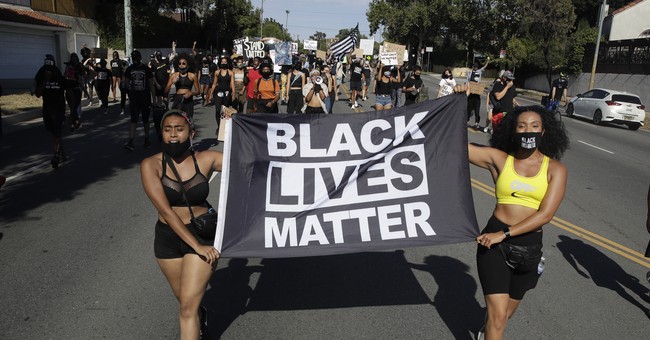
Do you remember reading Junior Scholastic magazine, as a kid? I do. It was always full of informational, uplifting stories and articles that made me proud of not only the education I was receiving but also of the country in which I was growing up. That was then, this is now.
When I hopped on dreadful Facebook, this morning, I had a private message from my sister-in-law, who was, as she wrote, “beside myself” over a copy of a newsletter she received from her boss — Majority Leader of the Indiana State Senate — which was mailed to parents of middle-schoolers in parts of central Indiana — at least.
One of my sister-in-law’s two daughters is in middle school. The other will soon be there. We’re talking kids aged 11 to 14 years old, here.
Accompanying the newsletter were screenshots from a recent Junior Scholastic magazine article, titled — in “yuuge” black block letters against a yellow background — “Uniting for Black Lives.”
Incidentally, only subscribers can access the online article. Upon trying to become one, I learned that I must subscribe as an educator, with a minimum of 20 students at $7.65 a pop, per month.
The subhead read:
“Millions of people nation-wide [sic] have joined the Black Lives Matter movement to protest long-standing racism and police violence towards Black Americans. Will this movement help bring important change?”
“Engage your middle-schoolers at home, at school, or both!” proclaims the beginning of the print version.
Atop the online version, in bold, all-caps font: “EVERY ARTICLE IS A CURRICULUM-CONNECTED TEACHING PACKAGE.”
The article begins with a Black 15-year-old girl’s feelings when she learned of George Floyd’s death.
When 15-year-old Kennedy Green learned about the death of George Floyd this past May, she was outraged. Floyd, a Black man, was killed by a white police officer in Minneapolis, Minnesota.
(The Hennipin County medical examiner begs to differ; he found that Floyd had a fatal level of fentanyl in his system.)
While pinning Floyd to the ground, the officer pressed his knee into Floyd’s neck for more than eight minutes — slowly suffocating him — despite Floyd’s desperate pleas and the fact that he said “I can’t breathe” more than 20 times.
(Again the facts beg to differ; Floyd told officers he was struggling to breathe before the officer put a knee on his neck.)
Point? Scholastic destroyed its credibility in the first paragraph — as if there were any doubt it would do so, multiple times over.
Later in the propaganda piece, Scholastic wrote:
Since [Floyd’s] death, people of all ages, races, and backgrounds have rallied in support of the Black Lives Matter movement. Protesters have demonstrated in every U.S. state — in cities and small towns — and in dozens of countries worldwide.
One estimate in the U.S. put the number at up to 26 million, making the recent Black Lives Matter rallies [hahahahahahaha] the largest protest movement ever in American history.
In addition to calling for police reforms, the protesters are demanding broader issues to eliminate systemic racism in all aspects of American society, including education, housing, and health care.
Ah, there it is: systemic racism. Speaking of which, embedded in the online version of the article is this “cute” little video — designed to teach our young children about a problem that does not exist.
Here’s how Scholastic defines “systemic” racism:
Experts say systemic racism isn’t limited to individual acts of hatred or discrimination based on a person’s race. It is also a system of power that gives advantages to white people at the expense of people of other races and backgrounds.
This doesn’t mean that white people don’t face hardships, just that the color of their skin isn’t a reason for those hardships.
Systemic racism is embedded in all aspects of American society, including our laws, policies, industries, schools, and culture — and is something all of us are a part of.
It is reflected in the fact that Black Americans are more likely than white Americans to attend underfunded schools, live in poor communities, receive inferior health care, and earn lower wages.
So simplistic, isn’t it? So black and white — pun intended.
You see what they’re doing here, right? As enraged as I was as I dug into this article after receiving the message from my sister-in-law this morning, I can only imagine her rage — and the rage of other parents of middle-school children and younger across the country as they uncover blatant attempt after blatant attempt to indoctrinate their children with misrepresentations, and outright lies.
A Long Struggle for Justice
So reads the subhead of one of the segments of the article:
Racism has plagued the U.S. since the country’s very beginnings when it was used to justify slavery. Starting in the 1500s, millions of Black men, women, and children were ripped from their homes in Africa [by other Black Africans, the Barbary Coast pirates among them, who sold them into slavery], locked in heavy chains, and forced onto crowded boats bound for the Americas.
(Was this writer watching Alex Haley’s “Roots” while writing this rubbish? I was waiting for Kunta Kinte to show up any minute.)
Those who survived the dangerous journey — and generations of their descendants — were made to work in fields, homes, and factories owned by white people. They were treated as property and denied their basic human rights. This brutal system of forced labor continued for centuries and helped the U.S. become one of the wealthiest nations in the world.
Uh-oh. I smell a push for “reparations” coming. It gets worse:
Oftentimes, racist white people, including some polices officers, enforced such policies through violence. According to the Equal Justice Initiative, […] at least 6,500 Black Americans were lynched from 1865 to 1950.
Is it any wonder “white guilt” continues to embed itself — from Looney Tunes Hollywood to young children who are selectively taught “history”; much of it revisionist at best?
While the Scholastic Twitter account doesn’t include a tweet linking to this article, it does tweet plenty of race-focused indoctrination. It also tweets information on mock presidential elections for kids K-12.
With Election Day almost here, kids in grades K-12 nationwide still have time to make their voices heard by casting their vote for U.S. President in the #ScolasticStudentVote2020!
With Election Day almost here, kids in grades K–12 nationwide still have time to make their voices heard by casting their vote for U.S. President in the #ScholasticStudentVote2020! Learn more here: https://t.co/KMId77whE5 pic.twitter.com/kBReIYXELe
— Scholastic (@Scholastic) September 17, 2020
A trip to the link reveals the following (bolded font, mine):
According to data from the Scholastic Teacher & Principal School Report: 2nd Edition, 92% of teachers agree that teaching students about the U.S. presidential election is an important way to help them become engaged and informed citizens.
Exactly. The problem being, “taught” what and “informed” of what by whom — with what political predisposition?
Finally, the lengthy article compared Donald Trump and Joe Biden.
Compare the Candidates on the Issues
Here we go, as “taught” and “informed” by Scholastic — along with teachers in our public — taxpayer-funded — school systems, to the kids of America.
Pandemic Response:
Trump has focused on the fast development of a vaccine for the coronavirus. Meanwhile, he has largely left it up to individual states to combat the pandemic. In April, he began encouraging states to reopen quickly to boost the economy.
Biden says a strong federal plan is necessary to contain the coronavirus, including more testing and better equipping of hospitals and medical workers. To restart the economy safely, Biden says the U.S. government must provide more aid to businesses and workers.
Racial Justice:
Trump says the pre-pandemic economy’s record low unemployment rates for Black Americans and Latinx Americans reflect his work to help people of color. He has taken an aggressive stance against protesters who are calling for an end to racism in the U.S.
Biden says racism in the U.S. is a problem that needs urgent attention. He pledges to enact policies to help close the racial wealth gap. He has called for the U.S. government to increase investigations of unlawful treatment of Black Americans by police.
Economy:
Trump: Overall, the economy has been a major focus of Trump’s presidency. To strengthen the economy, he supports fewer regulations on businesses and cutting taxes. In 2017, he signed a major bill into law that reduced taxes for Americans and corporations.
Biden‘s long-term plan for strengthening the economy involves major building projects. He supports increasing the federal minimum wage from $7.25 per hour to $15 per hour. He also supports increasing taxes on wealthy Americans and corporations.
Climate Change:
Trump has questioned how much of an emergency the climate is. In 2017, he announced that the U.S. would withdraw from an international agreement to limit global carbon emissions, saying such restrictions would hurt the U.S. economy.
Biden says that climate change is a major global threat. He pledges to drastically reduce carbon emissions and launch major projects to help U.S. industries rely less on fossil fuels — or run entirely on renewable energy, such as wind or solar power.
Immigration:
Trump: Restricting both legal and illegal immigration to this country has been one of Trump’s priorities as president. For example, he has significantly limited the number of individuals allowed to resettle in the U.S. to escape violence in their homelands.
Biden supports increasing the number of immigrants and refugees legally allowed into this country. He wants to create a path to citizenship for undocumented immigrants already living in the U.S. who he says have strengthened the nation for years.
Speechless? Or angry? So was I, although more of the latter.
My sister-in-law copied me on an email she sent to the principal of the school one of her daughters attends.
As a parent of a current and former student of West, I need to know if the attached document was or will be distributed at West Middle School.
If so, it goes WAY beyond informing students of recent events and is a form of blatant political campaigning on behalf of the Democrat presidential candidate/party and against the Republican presidential candidate/party.
Before I go on a major rant, please let me know. Thank you.
The principal did not immediately respond.
This is reality. It is reason #4,853,792,685 why parents need to not only pay attention to what their young children are bringing home from school but also to the left-wing propaganda they’re being fed while they’re there.
Libertarian Michael Bednarik said it well:
“When the state or federal government controls the education of all of our children, they have the dangerous and illegitimate monopoly to control and influence the thought process of our citizens.”
The insidiousness of Leftism has long been pervasive in our public schools. Today, it is why mush-minded young people are embracing socialism, throwing Molotov cocktails in the streets of our cities, killing police officers, and attempting to burn down police stations.
It is past time for it to end. Pay attention to those who are teaching your children. If not, it will only get worse. They are counting on it.
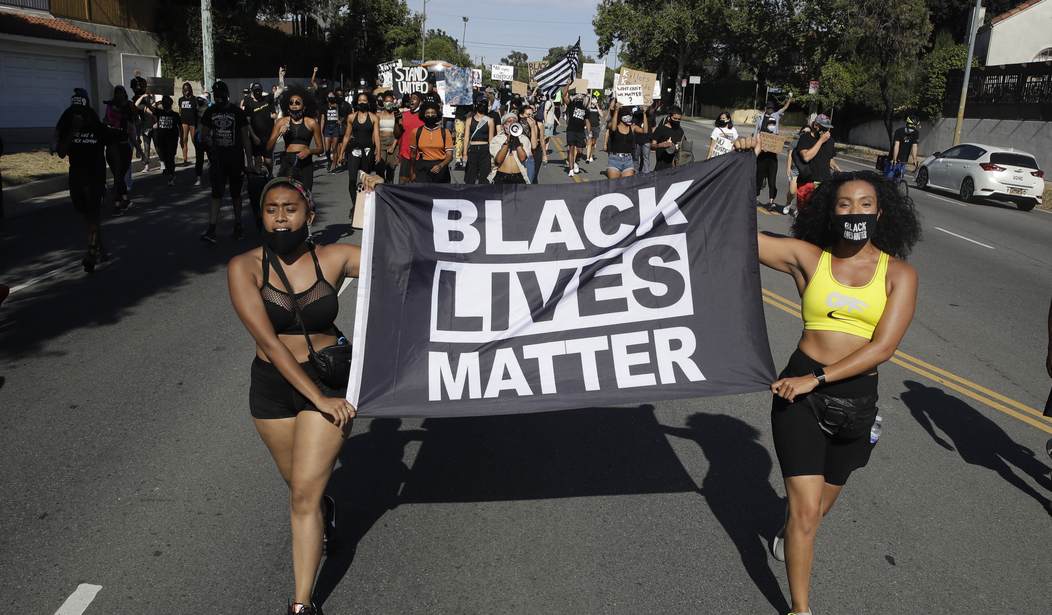



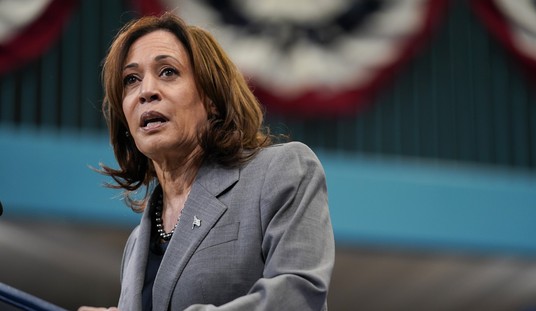
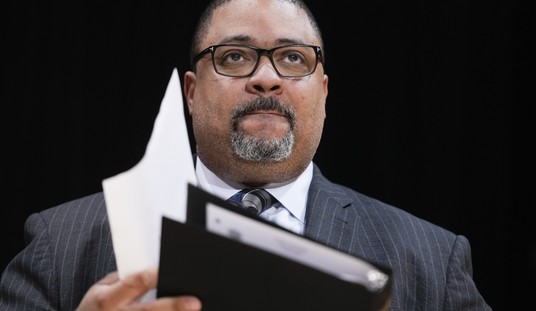
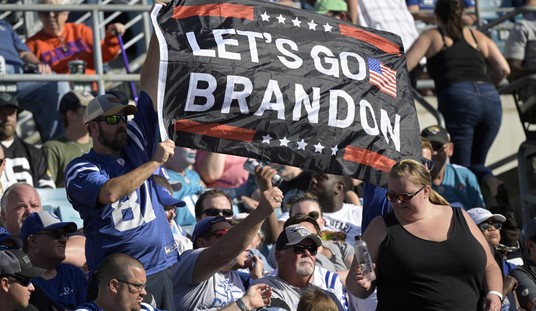
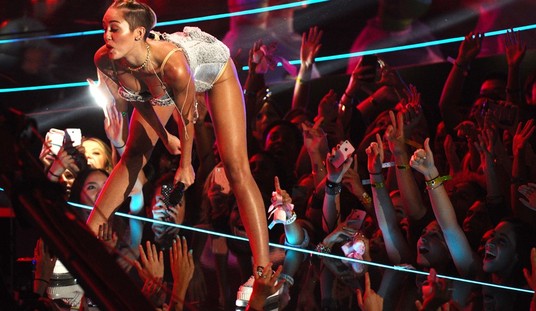

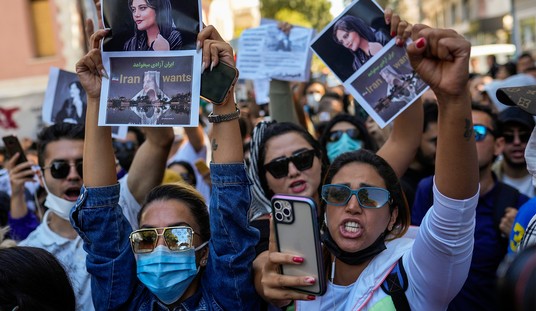



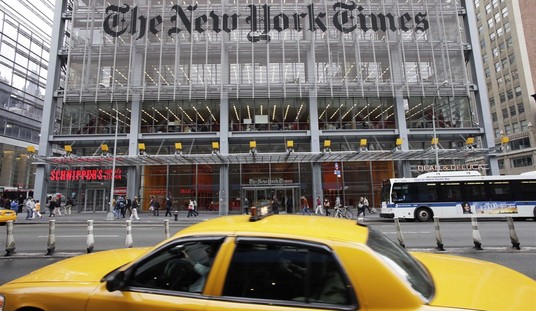
Join the conversation as a VIP Member